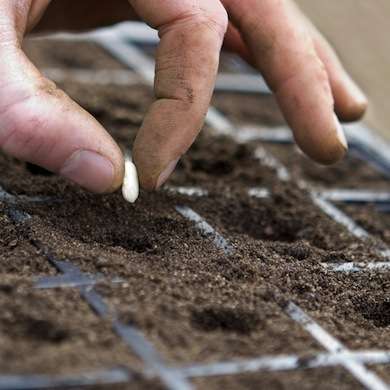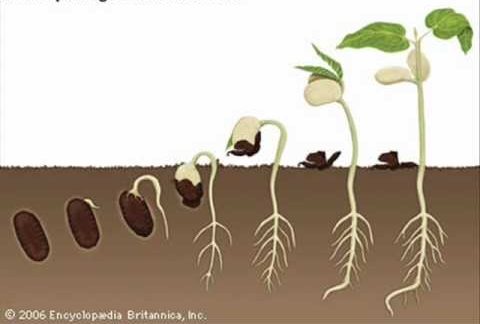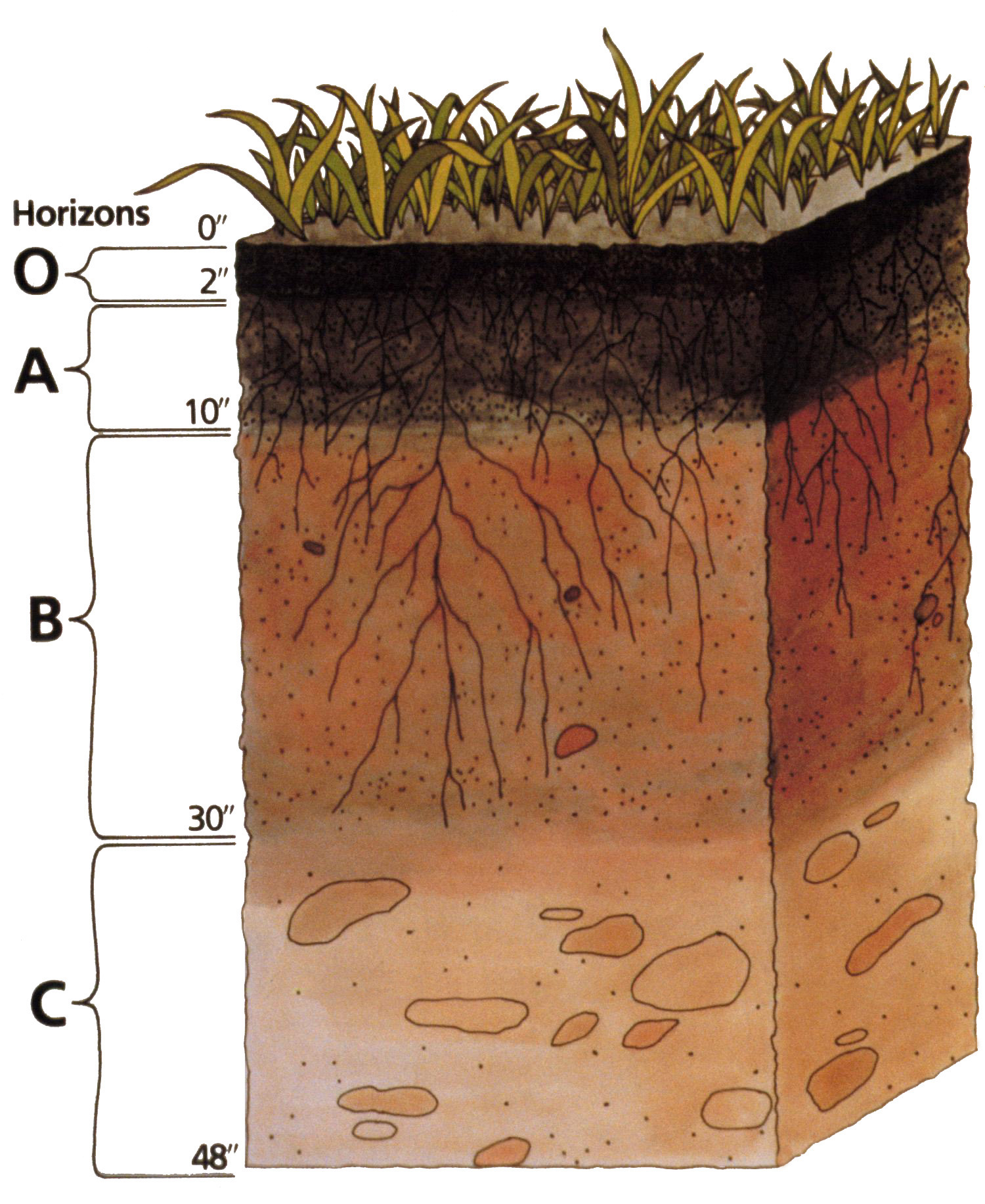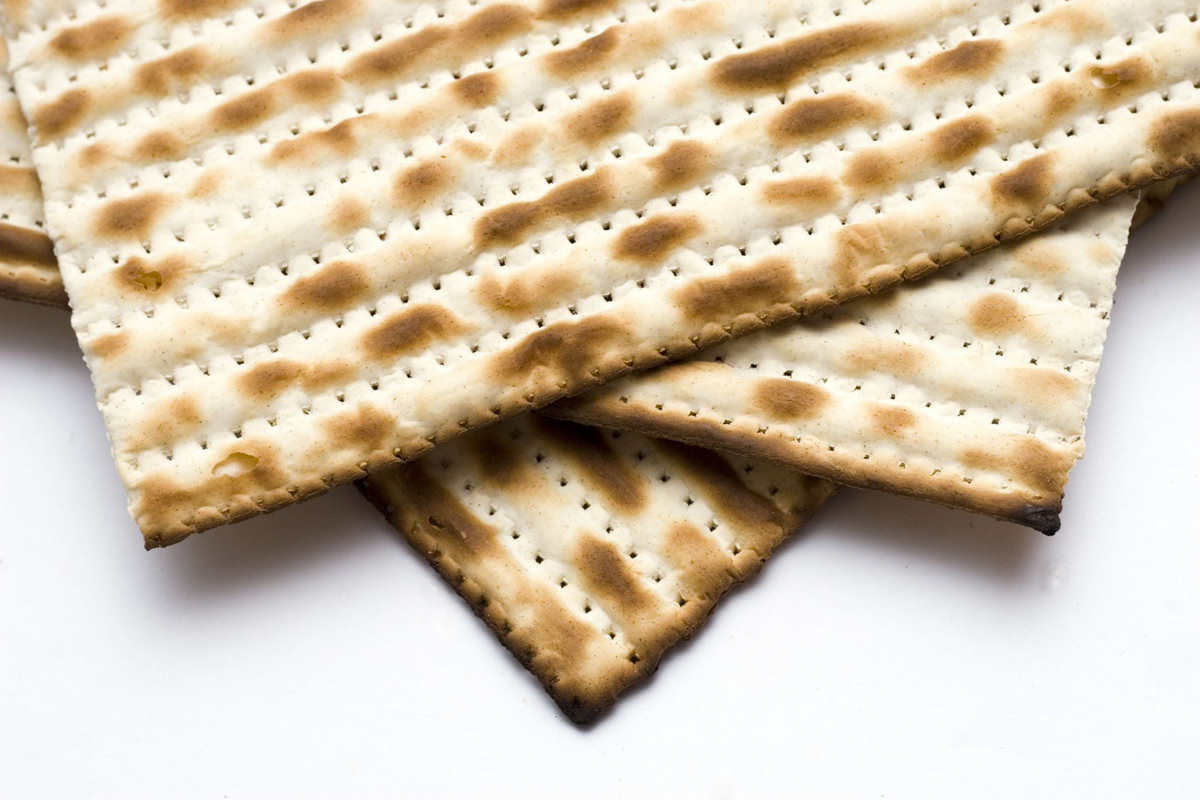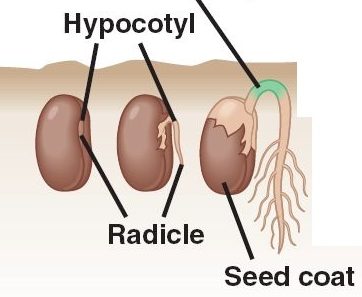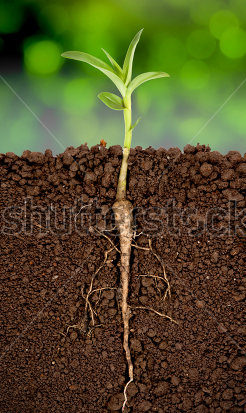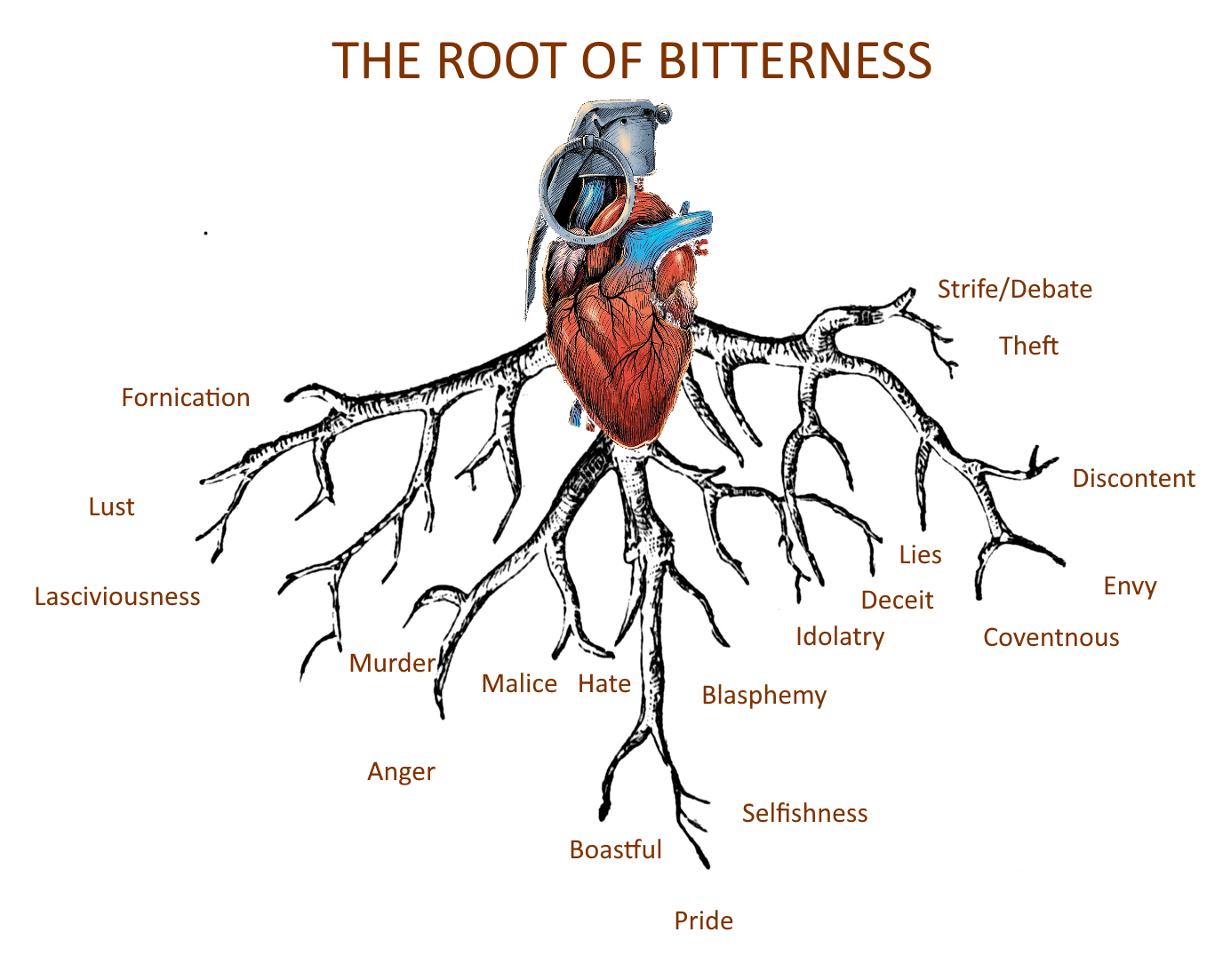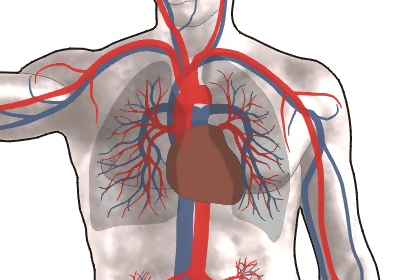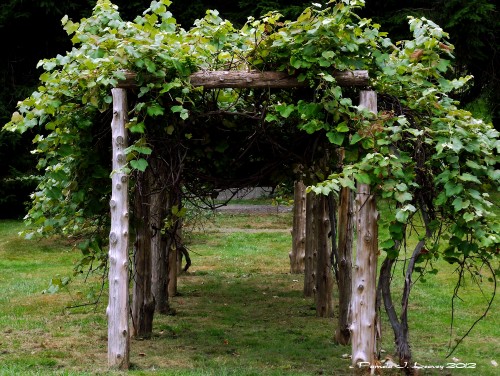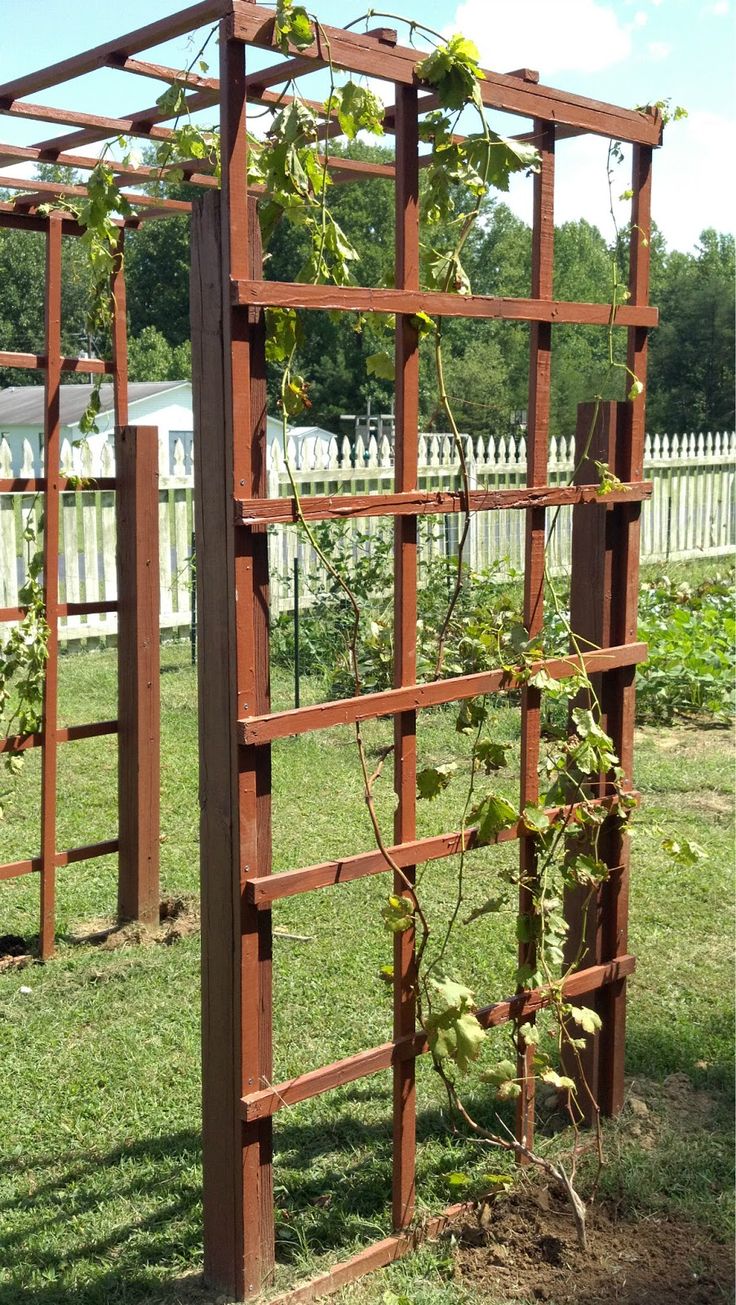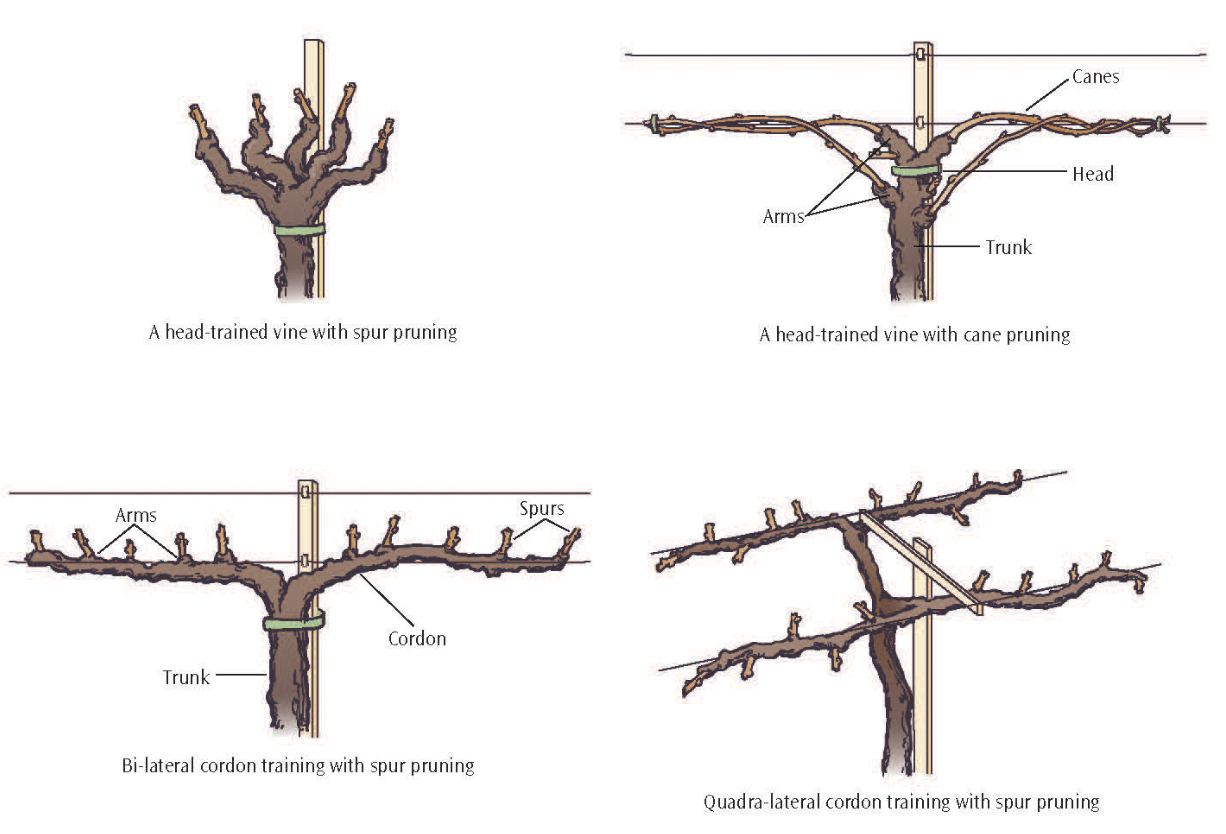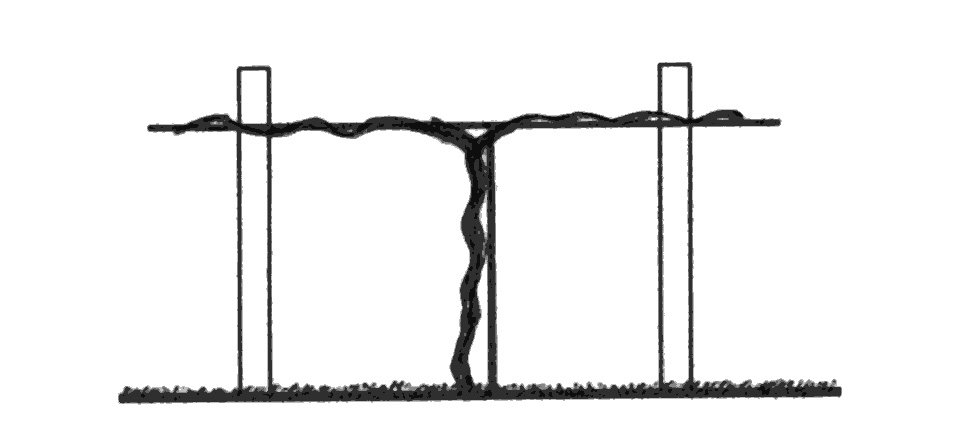Grape :: Vine :: Vineyard :: Winepress
![]() Matthew 13 : The Parable of the Sower (Mark 4:1-9; Luke 8:4-15)
Matthew 13 : The Parable of the Sower (Mark 4:1-9; Luke 8:4-15)
1The same day went Jesus out of the house, and sat by the sea side. 2And great multitudes were gathered together to him, so that he went into a ship, and sat; and the whole multitude stood on the shore. 3And he spoke many things to them in parables, saying,
Behold, a sower went forth to sow; And when he sowed,
some seeds fell by the way side,
and the fowls came and devoured them up:

some fell on stony places, where they had not much earth:
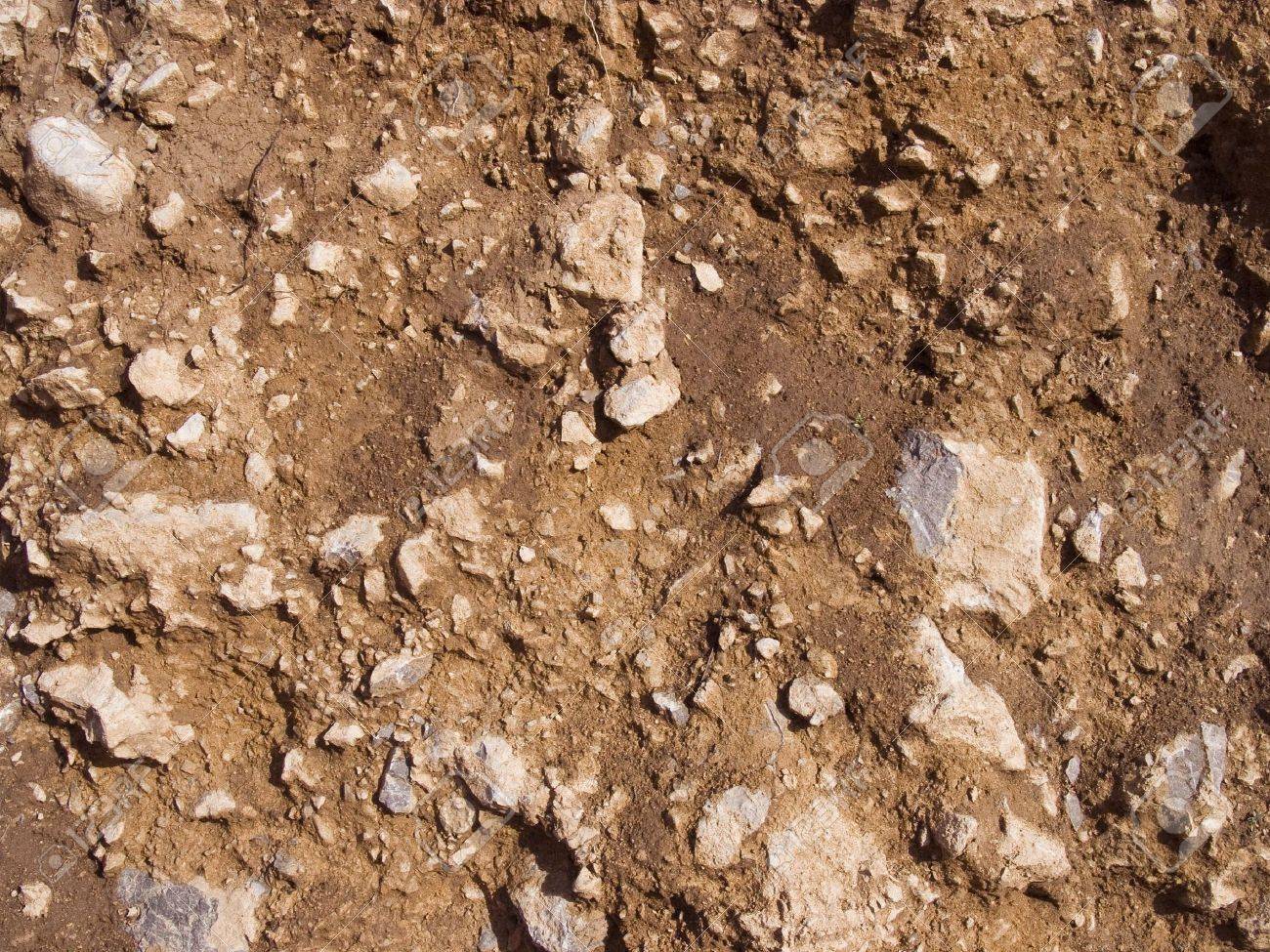
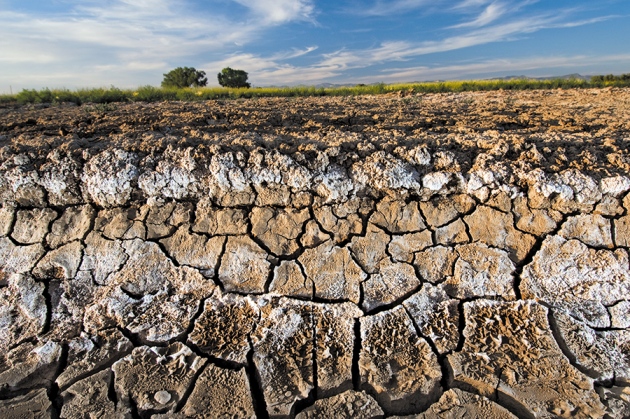
and immediately they sprung up, because they had no deepness of earth:
And when the sun was up, they were scorched;
and because they had no root, they withered away.
and some fell among thorns;
and the thorns sprung up, and choked them:
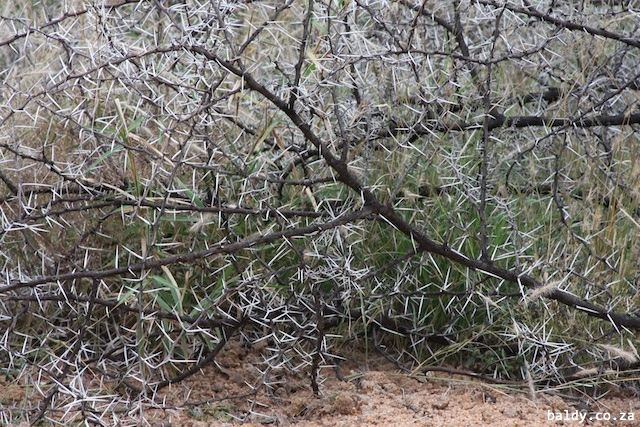
but other fell into good ground,
and brought forth fruit, some an hundred times, some sixty times, some thirty times.
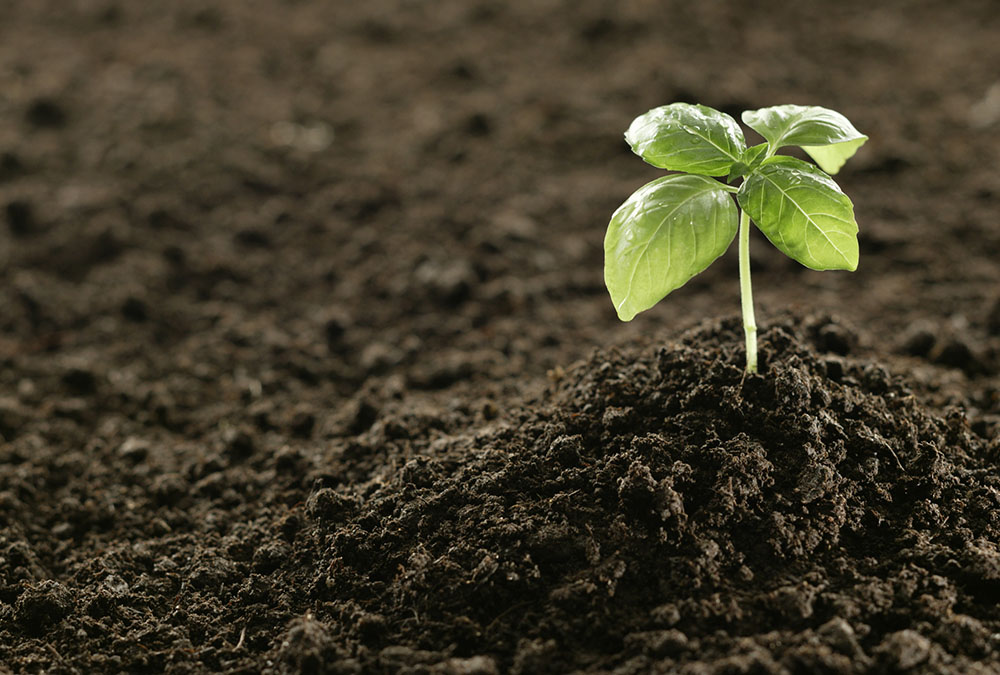
9Who has ears to hear, let him hear.
THE SEED
The flowering plant’s unit of reproduction, capable of developing into another such plant.
It contains INSTRUCTIONS and FOOD necessary to sprout life as a plant.
It is planted / sown / established in SOIL (the ground)
SEED = THE WORD
INSTRUCTIONS (contained in the seed) = THE LAW (2 Table of Stone)
Instructions :: detailed information telling how something should be done, operated, or assembled.
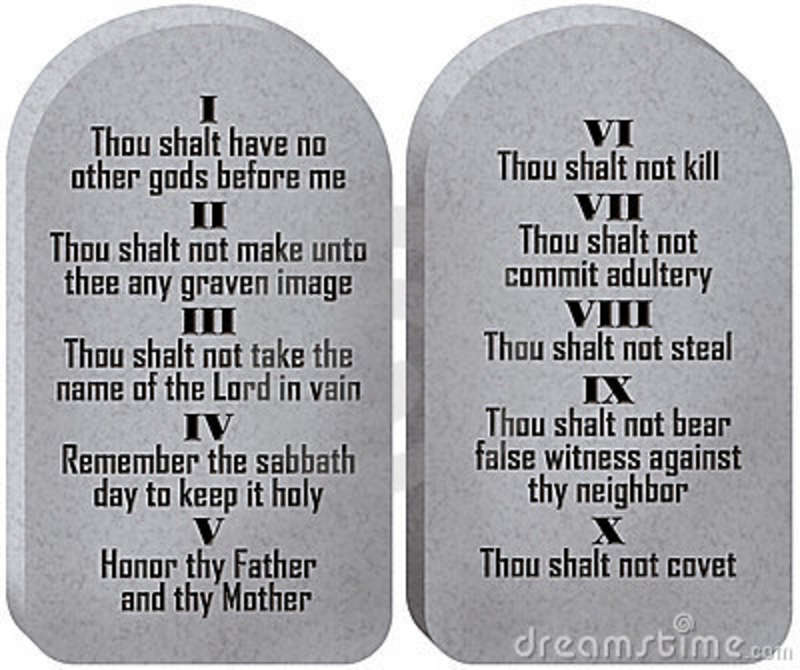
FOOD / NOURISHMENT (contained in the seed) = MANNA / Wafers of Unleavened Bread / Bread of Life
Food :: any nutritious substance that people or animals eat or drink, or that plants absorb, in order to maintain life and growth.
THE RADICLE = GRACE / MERCY / FORGIVENESS
is the first thing that emerges from the seed during germination.
It is the embryonic root that grows downward into the soil. It allows the seed to suck up the water and send out leaves so it can start photosynthesizing (the process used by plants and other organisms to convert light energy into chemical energy that can later be released to fuel the organisms activities.
THE ROOT = JESUS (DEATH), THE ROOT OF DAVID
The part of a plant, generally underground,
that anchors and supports the plant body,
absorbs and stores water and nutrients,
and in some plants is able to perform vegetative reproduction.The basic cause, source, or origin of something.
To establish, the foundation
Bottom, heel
It is the part of a plant that attaches it to the ground or to a support, typically underground,
conveying water and nourishment to the rest of the plant via numerous branches and fibers.
His death on the cross :: the blood that was shed for remission of sins
[Romans 15:12 KJV] 12 And again, Esaias saith, There shall be a root of Jesse, and he that shall rise to reign over the Gentiles; in him shall the Gentiles trust.
[Revelation 5:5 KJV] 5 And one of the elders saith unto me, Weep not: behold, the Lion of the tribe of Juda, the Root of David, hath prevailed to open the book, and to loose the seven seals thereof.
[Revelation 22:16 KJV] 16 I Jesus have sent mine angel to testify unto you these things in the churches. I am the root and the offspring of David, and the bright and morning star.
[Deuteronomy 29:18 KJV] 18 Lest there should be among you man, or woman, or family, or tribe, whose heart turneth away this day from the LORD our God, to go and serve the gods of these nations; lest there should be among you a root that beareth gall and wormwood;
[Hebrews 12:15 KJV] 15 Looking diligently lest any man fail of the grace of God; lest any root of bitterness springing up trouble you, and thereby many be defiled;
SOIL (the ground in which the seed was sown) = THE HEART
Crops need nutrients just like people do.
Fertile soil will contain all the nutrients for basic plant nutrition.
The heart is a muscular organ in most animals, which pumps blood through the blood vessels of the circulatory system.
Leviticus 17 : Eating of Blood Forbidden
10And whatever man there be of the house of Israel, or of the strangers that sojourn among you, that eats any manner of blood; I will even set my face against that soul that eats blood, and will cut him off from among his people.
11For the life of the flesh is in the blood:
and I have given it to you on the altar to make an atonement for your souls:
for it is the blood that makes an atonement for the soul.
Blood is a body fluid in humans and other animals that delivers necessary substances such as nutrients and oxygen to the cells and transports metabolic waste products away from those same cells.[1]
Blood performs many important functions within the body, including:
Supply of oxygen to tissues (bound to hemoglobin, which is carried in red cells)
Supply of nutrients such as glucose, amino acids, and fatty acids (dissolved in the blood or bound to plasma proteins (e.g., blood lipids))
Removal of waste such as carbon dioxide, urea, and lactic acid
Immunological functions, including circulation of white blood cells, and detection of foreign material by antibodies
Coagulation, the response to a broken blood vessel, the conversion of blood from a liquid to a semisolid gel to stop bleeding
Messenger functions, including the transport of hormones and the signaling of tissue damage
Regulation of core body temperature
Hydraulic functions
Blood accounts for 7% of the human body weight
Blood provides the body with oxygen and nutrients, as well as assists in the removal of metabolic wastes.[2]
Metabolic Waste = SIN
Matthew 15
12Then came his disciples, and said to him, Know you that the Pharisees were offended, after they heard this saying? 13But he answered and said, Every plant, which my heavenly Father has not planted, shall be rooted up. 14Let them alone: they be blind leaders of the blind. And if the blind lead the blind, both shall fall into the ditch. 15Then answered Peter and said to him, Declare to us this parable. 16And Jesus said, Are you also yet without understanding? 17Do not you yet understand, that whatever enters in at the mouth goes into the belly, and is cast out into the draught?
18But those things which proceed out of the mouth come forth from the heart; and they defile the man.
19For out of the heart proceed
evil thoughts,
murders,
adulteries,
fornications,
thefts,
false witness,
blasphemies:20These are the things which defile a man: but to eat with unwashed hands defiles not a man.
Crops need nutrients just like people do.
Fertile soil will contain all the nutrients for basic plant nutrition.
Fertile Soil (A Clean Heart) provides all nutrition we need for the rest of the body.
When we accept Him into our hearts, his Holy Spirit provides fertile soil to bear fruit.
The Holy Spirit works to mortify the deeds of the flesh (produced by sin which lives in our body through adam’s transgression) by our faith in the one who conquered sin and deaths reign, by fulfilling what was required and satisfying the requirements/obligations of the penalty of sins, which was His death on the cross, and the shedding of innocent blood (propitiation), which offered atonement (covering) of sins, which allows for forgiveness of sins recurring debt. (We were brought with a price)
The Righteousness of His blood that was shed for remission of sins, has been ascribed to our hearts.
Our Sins were ascribed to Him.
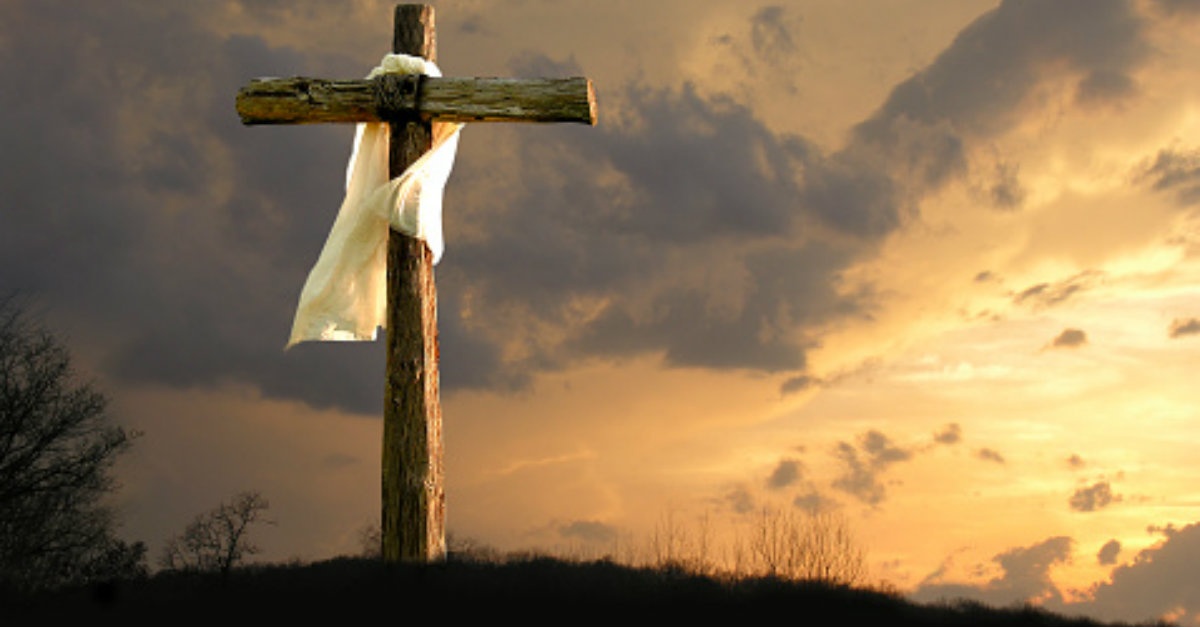
Romans 6 : Dead to Sin, Alive to God (2 Corinthians 4:7-18)
1What shall we say then? Shall we continue in sin, that grace may abound? 2God forbid. How shall we, that are dead to sin, live any longer therein? 3Know you not, that so many of us as were baptized into Jesus Christ were baptized into his death?4Therefore we are buried with him by baptism into death: that like as Christ was raised up from the dead by the glory of the Father, even so we also should walk in newness of life. 5For if we have been planted together in the likeness of his death, we shall be also in the likeness of his resurrection: 6Knowing this, that our old man is crucified with him, that the body of sin might be destroyed, that from now on we should not serve sin. 7For he that is dead is freed from sin.
8Now if we be dead with Christ, we believe that we shall also live with him: 9Knowing that Christ being raised from the dead dies no more; death has no more dominion over him. 10For in that he died, he died to sin once: but in that he lives, he lives to God. 11Likewise reckon you also yourselves to be dead indeed to sin, but alive to God through Jesus Christ our Lord.
12Let not sin therefore reign in your mortal body, that you should obey it in the lusts thereof. 13Neither yield you your members as instruments of unrighteousness to sin: but yield yourselves to God, as those that are alive from the dead, and your members as instruments of righteousness to God. 14For sin shall not have dominion over you: for you are not under the law, but under grace.
Since we are dead in Christ, and made alive in Him, we are no longer under Judgement (free from the Law)
Hebrews 12 : Christ’s Sacrifice Once for All (Psalm 147:1-20; Romans 3:1-8)
1For the law having a shadow of good things to come, and not the very image of the things, can never with those sacrifices which they offered year by year continually make the comers thereunto perfect. 2For then would they not have ceased to be offered? because that the worshippers once purged should have had no more conscience of sins. 3But in those sacrifices there is a remembrance again made of sins every year. 4For it is not possible that the blood of bulls and of goats should take away sins.
5Why when he comes into the world, he said, Sacrifice and offering you would not, but a body have you prepared me: 6In burnt offerings and sacrifices for sin you have had no pleasure. 7Then said I, See, I come (in the volume of the book it is written of me,) to do your will, O God. 8Above when he said, Sacrifice and offering and burnt offerings and offering for sin you would not, neither had pleasure therein; which are offered by the law; 9Then said he, See, I come to do your will, O God. He takes away the first, that he may establish the second. 10By the which will we are sanctified through the offering of the body of Jesus Christ once for all.
11And every priest stands daily ministering and offering oftentimes the same sacrifices, which can never take away sins: 12But this man, after he had offered one sacrifice for sins for ever, sat down on the right hand of God; 13From now on expecting till his enemies be made his footstool. 14For by one offering he has perfected for ever them that are sanctified. 15Whereof the Holy Ghost also is a witness to us: for after that he had said before,
16This is the covenant that I will make with them after those days, said the Lord, I will put my laws into their hearts, and in their minds will I write them; 17And their sins and iniquities will I remember no more. 18Now where remission of these is, there is no more offering for sin.
All blood cells come from blood stem cells (progenitor cells).
When blood cells become old or damaged and die, progenitor cells produce new blood cells to take their place.
Although some blood progenitor cells are in the blood, most reside in the bone marrow.
john 12 : Jesus Predicts His Death
20And there were certain Greeks among them that came up to worship at the feast: 21The same came therefore to Philip, which was of Bethsaida of Galilee, and desired him, saying, Sir, we would see Jesus. 22Philip comes and tells Andrew: and again Andrew and Philip tell Jesus. 23And Jesus answered them, saying, The hour is come, that the Son of man should be glorified. 24Truly, truly, I say to you, Except a corn of wheat fall into the ground and die, it stays alone: but if it die, it brings forth much fruit. 25He that loves his life shall lose it; and he that hates his life in this world shall keep it to life eternal. 26If any man serve me, let him follow me; and where I am, there shall also my servant be: if any man serve me, him will my Father honor.
The Purpose of Jesus’ Parables (Mark 4:10-12)
10And the disciples came, and said to him, Why speak you to them in parables? 11He answered and said to them, Because it is given to you to know the mysteries of the kingdom of heaven, but to them it is not given. 12For whoever has, to him shall be given, and he shall have more abundance: but whoever has not, from him shall be taken away even that he has. 13Therefore speak I to them in parables: because they seeing see not; and hearing they hear not, neither do they understand.
14And in them is fulfilled the prophecy of Esaias, which said,
By hearing you shall hear, and shall not understand;
and seeing you shall see, and shall not perceive:
For this people’s heart is waxed gross,
and their ears are dull of hearing,
and their eyes they have closed;
lest at any time they should
see with their eyes
and hear with their ears,
and should understand with their heart,
and should be converted, and I should heal them. 16But blessed are your eyes, for they see: and your ears, for they hear. 17For truly I say to you, That many prophets and righteous men have desired to see those things which you see, and have not seen them; and to hear those things which you hear, and have not heard them.
The Parable of the Sower Explained (Mark 4:13-20)
Hear you therefore the parable of the sower.
When any one hears the word of the kingdom, and understands it not,
then comes the wicked one,
and catches away that which was sown in his heart.
This is he which received seed by the way side.
But he that received the seed into stony places, the same is he that hears the word,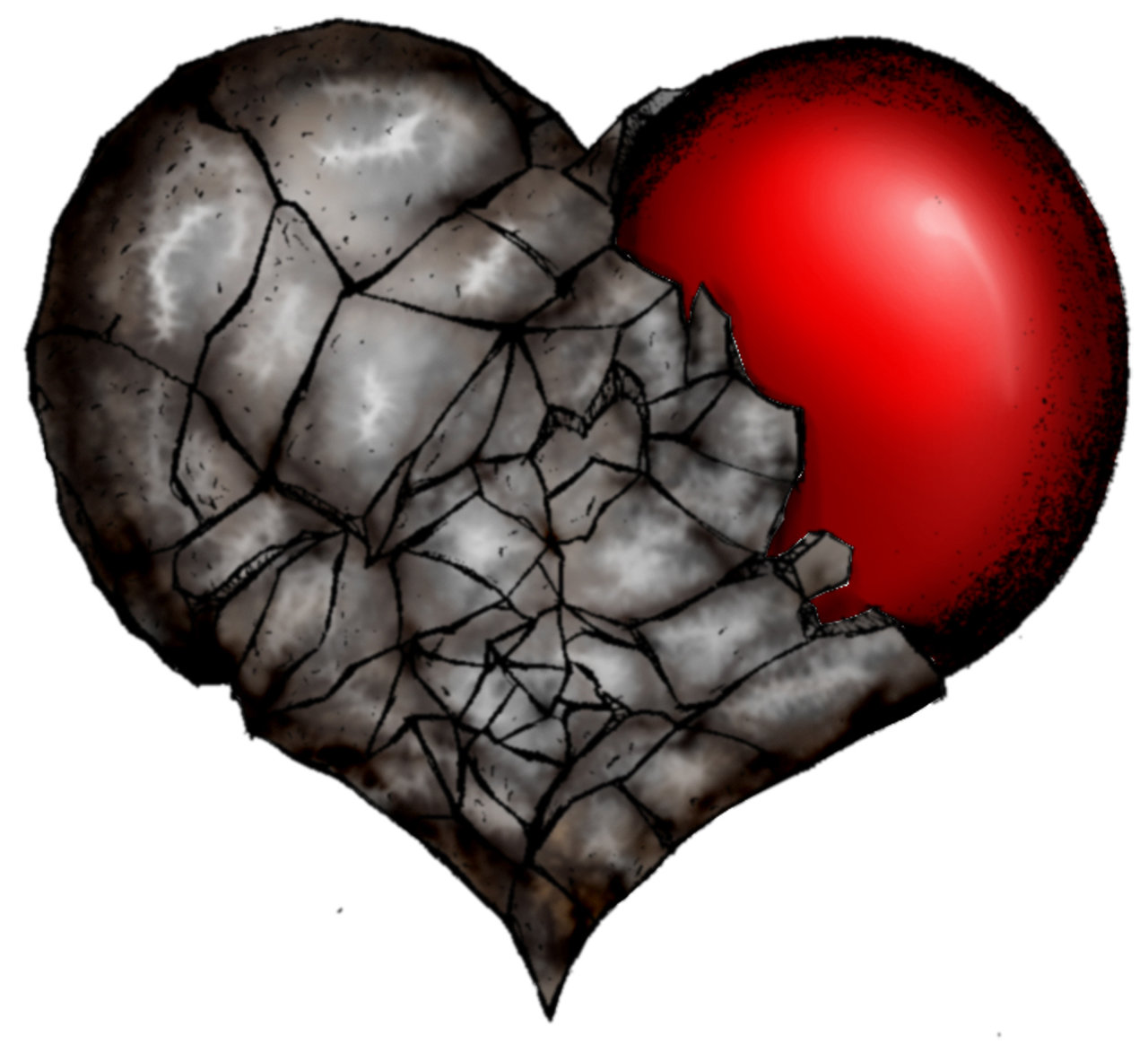
and immediately with joy receives it;
Yet has he not root in himself, but endures for a while:
for when tribulation or persecution rises because of the word,
by and by he is offended.
He also that received seed among the thorns is he that hears the word;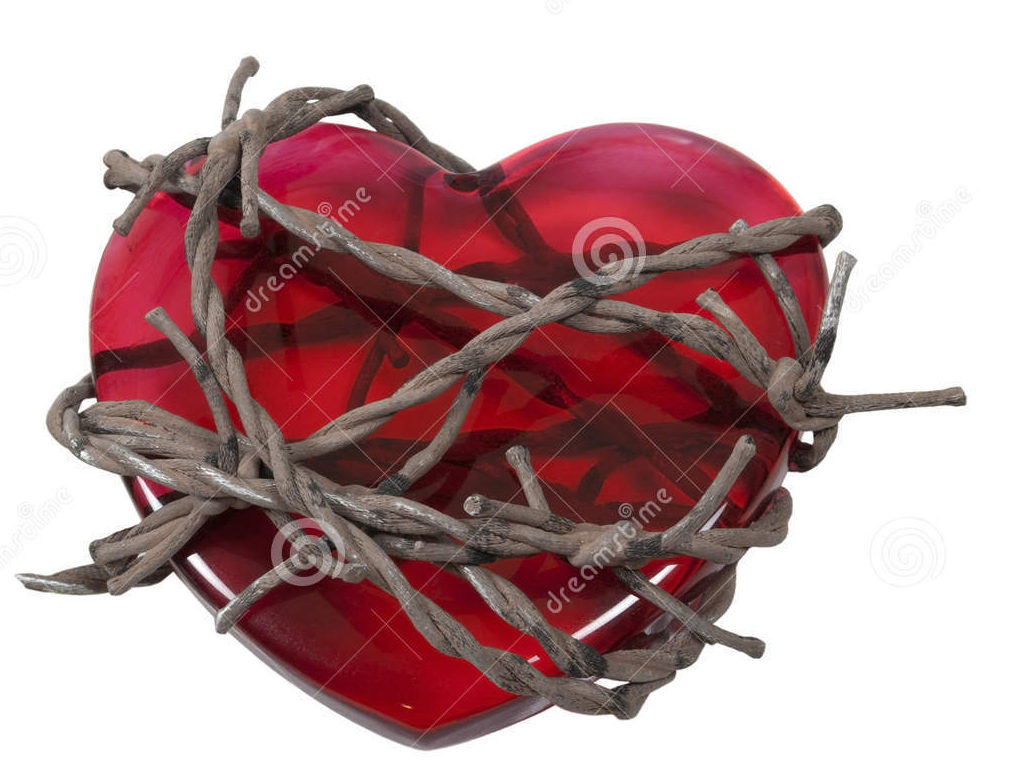
and the care of this world,
and the deceitfulness of riches,
choke the word,
and he becomes unfruitful.
But he that received seed into the good ground is he that hears the word,
and understands it;
which also bears fruit, and brings forth,
some an hundred times, some sixty, some thirty.
Luke 8:4-15 The Parable of the Sower
And when much people were gathered together, and were come to him out of every city, he spoke by a parable:
A sower went out to sow his seed:
and as he sowed,some fell by the way side;
and it was trodden down,
and the fowls of the air devoured it.some fell on a rock;
and as soon as it was sprung up, it withered away,
because it lacked moisture.some fell among thorns;
and the thorns sprang up with it,
and choked it.And other fell on good ground,
and sprang up,
and bore fruit an hundred times.And when he had said these things, he cried, He that has ears to hear, let him hear.
And his disciples asked him, saying, What might this parable be? And he said, To you it is given to know the mysteries of the kingdom of God: but to others in parables; that seeing they might not see, and hearing they might not understand.
Now the parable is this: The seed is the word of God.
Those by the way side are they that hear;
then comes the devil,
and takes away the word out of their hearts,
lest they should believe and be saved.They on the rock are they, which, when they hear,
receive the word with joy;
and these have no root,
which for a while believe,
and in time of temptation fall away.And that which fell among thorns are they, which, when they have heard,
go forth,
and are choked with cares and riches and pleasures of this life,
and bring no fruit to perfection.But that on the good ground are they,
which in an honest and good heart,
having heard the word, keep it,
and bring forth fruit with patience.
The Parable of the Weeds (Ezekiel 17:1-10)
24Another parable put he forth to them, saying,
The kingdom of heaven is likened to a man which sowed good seed in his field:
25But while men slept, his enemy came and sowed tares among the wheat, and went his way.
26But when the blade was sprung up, and brought forth fruit, then appeared the tares also.
27So the servants of the householder came and said to him,
Sir, did not you sow good seed in your field?
from where then has it tares?
28He said to them, An enemy has done this.
The servants said to him, Will you then that we go and gather them up?
29But he said, No; lest while you gather up the tares, you root up also the wheat with them.
30Let both grow together until the harvest:
and in the time of harvest I will say to the reapers,
Gather you together first the tares,
and bind them in bundles to burn them:
but gather the wheat into my barn.
The Parable of the Mustard Seed Mark 4:30-34; Luke 13:18-19)
31Another parable put he forth to them, saying, The kingdom of heaven is like to a grain of mustard seed, which a man took, and sowed in his field: 32Which indeed is the least of all seeds: but when it is grown, it is the greatest among herbs, and becomes a tree, so that the birds of the air come and lodge in the branches thereof.
The Parable of the Leaven (Judges 20:18-23; 2 Samuel 2:12-32; 2 Chronicles 13:4-19; Luke 13:20-21)
33Another parable spoke he to them;
The kingdom of heaven is like to leaven,
which a woman took,
and hid in three measures of meal,
till the whole was leavened.
I will Open My Mouth in Parables (Psalm 78:1-72)
34All these things spoke Jesus to the multitude in parables; and without a parable spoke he not to them: 35That it might be fulfilled which was spoken by the prophet, saying, I will open my mouth in parables; I will utter things which have been kept secret from the foundation of the world.
The Parable of the Weeds Explained (Zephaniah 1:1-6)
36Then Jesus sent the multitude away, and went into the house:
and his disciples came to him, saying,
Declare to us the parable of the tares of the field.
37He answered and said to them,
He that sows the good seed is the Son of man;
38The field is the world;
the good seed are the children of the kingdom;
but the tares are the children of the wicked one;
39The enemy that sowed them is the devil;
the harvest is the end of the world;
and the reapers are the angels.
40As therefore the tares are gathered and burned in the fire; so shall it be in the end of this world.
41The Son of man shall send forth his angels, and they shall gather out of his kingdom all things that offend, and them which do iniquity;
42And shall cast them into a furnace of fire: there shall be wailing and gnashing of teeth.
43Then shall the righteous shine forth as the sun in the kingdom of their Father. Who has ears to hear, let him hear.
A seed has to cease becoming a seed (die) in order to bear fruit.
The Word who became flesh/Bread of Life/ (His blood shed and body broken on the cross)
Light, food, and water are necessary for growth of a seed / plant and for the production of fruit
LIGHT
- [John 1:4-5, 7-9 KJV] 4 In him was life; and the life was the light of men. 5 And the light shineth in darkness; and the darkness comprehended it not. … 7 The same came for a witness, to bear witness of the Light, that all men through him might believe. 8 He was not that Light, but was sent to bear witness of that Light. 9 That was the true Light, which lighteth every man that cometh into the world.
- [John 3:19-21 KJV] 19 And this is the condemnation, that light is come into the world, and men loved darkness rather than light, because their deeds were evil. 20 For every one that doeth evil hateth the light, neither cometh to the light, lest his deeds should be reproved. 21 But he that doeth truth cometh to the light, that his deeds may be made manifest, that they are wrought in God.
- [John 5:35 KJV] 35 He was a burning and a shining light: and ye were willing for a season to rejoice in his light.
- [John 8:12 KJV] 12 Then spake Jesus again unto them, saying, I am the light of the world: he that followeth me shall not walk in darkness, but shall have the light of life.
- [John 9:5 KJV] 5 As long as I am in the world, I am the light of the world.
- [John 11:9-10 KJV] 9 Jesus answered, Are there not twelve hours in the day? If any man walk in the day, he stumbleth not, because he seeth the light of this world. 10 But if a man walk in the night, he stumbleth, because there is no light in him.
- [John 12:35-36, 46 KJV] 35 Then Jesus said unto them, Yet a little while is the light with you. Walk while ye have the light, lest darkness come upon you: for he that walketh in darkness knoweth not whither he goeth. 36 While ye have light, believe in the light, that ye may be the children of light. These things spake Jesus, and departed, and did hide himself from them. … 46 I am come a light into the world, that whosoever believeth on me should not abide in darkness.
FOOD
- [John 6:31-33, 35, 41, 48, 50-51, 58 KJV] 31 Our fathers did eat manna in the desert; as it is written, He gave them bread from heaven to eat. 32 Then Jesus said unto them, Verily, verily, I say unto you, Moses gave you not that bread from heaven; but my Father giveth you the true bread from heaven. 33 For the bread of God is he which cometh down from heaven, and giveth life unto the world. … 35 And Jesus said unto them, I am the bread of life: he that cometh to me shall never hunger; and he that believeth on me shall never thirst. … 41 The Jews then murmured at him, because he said, I am the bread which came down from heaven. … 48 I am that bread of life. … 50 This is the bread which cometh down from heaven, that a man may eat thereof, and not die. 51 I am the living bread which came down from heaven: if any man eat of this bread, he shall live for ever: and the bread that I will give is my flesh, which I will give for the life of the world. … 58 This is that bread which came down from heaven: not as your fathers did eat manna, and are dead: he that eateth of this bread shall live for ever.
WATER
- [John 4:11, 13-15, 46 KJV] 11 The woman saith unto him, Sir, thou hast nothing to draw with, and the well is deep: from whence then hast thou that living water? … 13 Jesus answered and said unto her, Whosoever drinketh of this water shall thirst again: 14 But whosoever drinketh of the water that I shall give him shall never thirst; but the water that I shall give him shall be in him a well of water springing up into everlasting life. 15 The woman saith unto him, Sir, give me this water, that I thirst not, neither come hither to draw. …
- [John 7:38 KJV] 38 He that believeth on me, as the scripture hath said, out of his belly shall flow rivers of living water.
GROWTH
- Luke 12:27 Consider the lilies how they grow: they toil not, they spin not; and yet I say unto you, that Solomon in all his glory was not arrayed like one of these.
- Acts 12:24 But the word of God grew and multiplied.
- Acts 19:20 So mightily grew the word of God and prevailed.
- Ephesians 4:15 But speaking the truth in love, may grow up into him in all things, which is the head, even Christ:
- 1 Peter 2 As newborn babes, desire the sincere milk of the word, that ye may grow thereby:
- 2 Peter 3:18 But grow in grace, and in the knowledge of our Lord and Saviour Jesus Christ. To him be glory both now and for ever. Amen.
FRUIT
- [1 Corinthians 15:20, 23 KJV]
- 20 But now is Christ risen from the dead, and become the firstfruits of them that slept.
- … 23 But every man in his own order:
- Christ the firstfruits; afterward they that are Christ’s at his coming.
- [James 1:18 KJV] 18 Of his own will begat he us with the word of truth, that we should be a kind of firstfruits of his creatures.
- [Romans 8:23 KJV] 23 And not only they, but ourselves also, which have the firstfruits of the Spirit, even we ourselves groan within ourselves, waiting for the adoption, to wit, the redemption of our body.
- [Revelation 14:4 KJV] 4 These are they which were not defiled with women; for they are virgins. These are they which follow the Lamb whithersoever he goeth. These were redeemed from among men, being the firstfruits unto God and to the Lamb.
![]() Galatians 5 : Living by the Spirit (Romans 8:9-11)
Galatians 5 : Living by the Spirit (Romans 8:9-11)
16This I say then, Walk in the Spirit, and you shall not fulfill the lust of the flesh. 17For the flesh lusts against the Spirit, and the Spirit against the flesh: and these are contrary the one to the other: so that you cannot do the things that you would. 18But if you be led of the Spirit, you are not under the law. 19Now the works of the flesh are manifest, which are these; Adultery, fornication, uncleanness, lasciviousness, 20Idolatry, witchcraft, hatred, variance, jealousies, wrath, strife, seditions, heresies,21Contentions, murders, drunkenness, revelings, and such like: of the which I tell you before, as I have also told you in time past, that they which do such things shall not inherit the kingdom of God.
22But THE FRUIT OF THE SPIRIT is
love,
joy,
peace,
long-suffering,
gentleness,
goodness,
faith,
Meekness,
temperance:
against such there is no law. 24And they that are Christ’s have crucified the flesh with the affections and lusts. 25If we live in the Spirit, let us also walk in the Spirit. 26Let us not be desirous of vain glory, provoking one another, envying one another.
In common language usage, “fruit” normally means the fleshy seed-associated structures of a plant that are sweet or sour, and edible in the raw state, such as apples, bananas, grapes, lemons, oranges, and strawberries. On the other hand, in botanical usage, “fruit” includes many structures that are not commonly called “fruits”, such as bean pods, corn kernels, tomatoes, and wheat grains.[2][3] The section of a fungus that produces spores is also called a fruiting body.[4]
Jesus was the Word that came as sinful flesh, having no sin,
which was planted in our hearts through the Holy Spirit,
so the Law could be fulfilled and that we could bear fruit to him.
James 3:18 And the fruit of righteousness is sown in peace of them that make peace.
The Seed = The Word
Sown (planted) by God in our hearts.
![]() Isaiah 37
Isaiah 37
30And this shall be a sign to you, You shall eat this year such as grows of itself; and the second year that which springs of the same: and in the third year sow you, and reap, and plant vineyards, and eat the fruit thereof. 31And the remnant that is escaped of the house of Judah shall again take root downward, and bear fruit upward: 32For out of Jerusalem shall go forth a remnant, and they that escape out of mount Zion: the zeal of the LORD of hosts shall do this.
33Therefore thus said the LORD concerning the king of Assyria, He shall not come into this city, nor shoot an arrow there, nor come before it with shields, nor cast a bank against it. 34By the way that he came, by the same shall he return, and shall not come into this city, said the LORD. 35For I will defend this city to save it for my own sake, and for my servant David’s sake.
![]() Jeremiah 17 :
Jeremiah 17 :
5Thus said the LORD; Cursed be the man that trusts in man, and makes flesh his arm, and whose heart departs from the LORD. 6For he shall be like the heath in the desert, and shall not see when good comes; but shall inhabit the parched places in the wilderness, in a salt land and not inhabited. 7Blessed is the man that trusts in the LORD, and whose hope the LORD is. 8For he shall be as a tree planted by the waters, and that spreads out her roots by the river, and shall not see when heat comes, but her leaf shall be green; and shall not be careful in the year of drought, neither shall cease from yielding fruit.
9The heart is deceitful above all things, and desperately wicked: who can know it? 10I the LORD search the heart, I try the reins, even to give every man according to his ways, and according to the fruit of his doings. 11As the partridge sits on eggs, and hatches them not; so he that gets riches, and not by right, shall leave them in the middle of his days, and at his end shall be a fool.12A glorious high throne from the beginning is the place of our sanctuary. 13O LORD, the hope of Israel, all that forsake you shall be ashamed, and they that depart from me shall be written in the earth, because they have forsaken the LORD, the fountain of living waters.
Luke 6 : A Tree and its Fruit (Matthew 7:15-23; Matthew 12:33-37)
43For a good tree brings not forth corrupt fruit; neither does a corrupt tree bring forth good fruit. 44For every tree is known by his own fruit. For of thorns men do not gather figs, nor of a bramble bush gather they grapes. 45A good man out of the good treasure of his heart brings forth that which is good; and an evil man out of the evil treasure of his heart brings forth that which is evil: for of the abundance of the heart his mouth speaks.
Romans 6
5 For if we have been planted together in the likeness of his death, we shall be also in the likeness of his resurrection:
Matthew 15
13 But he answered and said, Every plant, which my heavenly Father hath not planted, shall be rooted up.
![]() Isaiah 11 : The Root of Jesse
Isaiah 11 : The Root of Jesse
1And there shall come forth a rod out of the stem of Jesse, and a Branch shall grow out of his roots: 2And the spirit of the LORD shall rest on him, the spirit of wisdom and understanding, the spirit of counsel and might, the spirit of knowledge and of the fear of the LORD; 3And shall make him of quick understanding in the fear of the LORD: and he shall not judge after the sight of his eyes, neither reprove after the hearing of his ears: 4But with righteousness shall he judge the poor, and reprove with equity for the meek of the earth: and he shall smite the earth: with the rod of his mouth, and with the breath of his lips shall he slay the wicked. 5And righteousness shall be the girdle of his loins, and faithfulness the girdle of his reins. 6The wolf also shall dwell with the lamb, and the leopard shall lie down with the kid; and the calf and the young lion and the fatted calf together; and a little child shall lead them. 7And the cow and the bear shall feed; their young ones shall lie down together: and the lion shall eat straw like the ox. 8And the sucking child shall play on the hole of the asp, and the weaned child shall put his hand on the cockatrice’ den. 9They shall not hurt nor destroy in all my holy mountain: for the earth shall be full of the knowledge of the LORD, as the waters cover the sea. 10And in that day there shall be a root of Jesse, which shall stand for an ensign of the people; to it shall the Gentiles seek: and his rest shall be glorious. 11And it shall come to pass in that day, that the Lord shall set his hand again the second time to recover the remnant of his people, which shall be left, from Assyria, and from Egypt, and from Pathros, and from Cush, and from Elam, and from Shinar, and from Hamath, and from the islands of the sea. 12And he shall set up an ensign for the nations, and shall assemble the outcasts of Israel, and gather together the dispersed of Judah from the four corners of the earth. 13The envy also of Ephraim shall depart, and the adversaries of Judah shall be cut off: Ephraim shall not envy Judah, and Judah shall not vex Ephraim. 14But they shall fly on the shoulders of the Philistines toward the west; they shall spoil them of the east together: they shall lay their hand on Edom and Moab; and the children of Ammon shall obey them. 15And the LORD shall utterly destroy the tongue of the Egyptian sea; and with his mighty wind shall he shake his hand over the river, and shall smite it in the seven streams, and make men go over with dry sandals. 16And there shall be an highway for the remnant of his people, which shall be left, from Assyria; like as it was to Israel in the day that he came up out of the land of Egypt.
![]() Isaiah 27 : The Deliverance of Israel
Isaiah 27 : The Deliverance of Israel
1In that day the LORD with his sore and great and strong sword shall punish leviathan the piercing serpent, even leviathan that crooked serpent; and he shall slay the dragon that is in the sea. 2In that day sing you to her, A vineyard of red wine. 3I the LORD do keep it; I will water it every moment: lest any hurt it, I will keep it night and day. 4Fury is not in me: who would set the briers and thorns against me in battle? I would go through them, I would burn them together. 5Or let him take hold of my strength, that he may make peace with me; and he shall make peace with me. 6He shall cause them that come of Jacob to take root: Israel shall blossom and bud, and fill the face of the world with fruit. 7Has he smitten him, as he smote those that smote him? or is he slain according to the slaughter of them that are slain by him? 8In measure, when it shoots forth, you will debate with it: he stays his rough wind in the day of the east wind. 9By this therefore shall the iniquity of Jacob be purged; and this is all the fruit to take away his sin; when he makes all the stones of the altar as chalkstones that are beaten in sunder, the groves and images shall not stand up. 10Yet the defended city shall be desolate, and the habitation forsaken, and left like a wilderness: there shall the calf feed, and there shall he lie down, and consume the branches thereof. 11When the boughs thereof are withered, they shall be broken off: the women come, and set them on fire: for it is a people of no understanding: therefore he that made them will not have mercy on them, and he that formed them will show them no favor. 12And it shall come to pass in that day, that the LORD shall beat off from the channel of the river to the stream of Egypt, and you shall be gathered one by one, O you children of Israel. 13And it shall come to pass in that day, that the great trumpet shall be blown, and they shall come which were ready to perish in the land of Assyria, and the outcasts in the land of Egypt, and shall worship the LORD in the holy mount at Jerusalem.
![]() Isaiah 53
Isaiah 53
2 For he shall grow up before him as a tender plant, and as a root out of a dry ground: he hath no form nor comeliness; and when we shall see him, there is no beauty that we should desire him.
![]() Jeremiah 12
Jeremiah 12
2 Thou hast planted them, yea, they have taken root: they grow, yea, they bring forth fruit: thou art near in their mouth, and far from their reins.
![]() Jeremiah 33
Jeremiah 33
15 In those days, and at that time, will I cause the Branch of righteousness to grow up unto David; and he shall execute judgment and righteousness in the land.
5 And one of the elders saith unto me, Weep not: behold, the Lion of the tribe of Juda, the Root of David, hath prevailed to open the book, and to loose the seven seals thereof.
16 I Jesus have sent mine angel to testify unto you these things in the churches. I am the root and the offspring of David, and the bright and morning star.
![]() John 15 : Jesus the True Vine
John 15 : Jesus the True Vine
1I am the true vine, and my Father is the farmer.2Every branch in me that bears not fruit he takes away: and every branch that bears fruit, he purges it, that it may bring forth more fruit.3Now you are clean through the word which I have spoken to you.4Abide in me, and I in you. As the branch cannot bear fruit of itself, except it abide in the vine; no more can you, except you abide in me. 5I am the vine, you are the branches: He that stays in me, and I in him, the same brings forth much fruit: for without me you can do nothing. 6If a man abide not in me, he is cast forth as a branch, and is withered; and men gather them, and cast them into the fire, and they are burned.7If you abide in me, and my words abide in you, you shall ask what you will, and it shall be done to you. 8Herein is my Father glorified, that you bear much fruit; so shall you be my disciples. 9As the Father has loved me, so have I loved you: continue you in my love. 10If you keep my commandments, you shall abide in my love; even as I have kept my Father’s commandments, and abide in his love.11These things have I spoken to you, that my joy might remain in you, and that your joy might be full.
Deuteronomy 5 : The Ten Commandments (Exodus 20:1-17)
6I am the LORD your God, which brought you out of the land of Egypt, from the house of bondage.
7You shall have none other gods before me.
8You shall not make you any graven image, or any likeness of any thing that is in heaven above, or that is in the earth beneath, or that is in the waters beneath the earth: 9You shall not bow down yourself to them, nor serve them: for I the LORD your God am a jealous God, visiting the iniquity of the fathers on the children to the third and fourth generation of them that hate me,10And showing mercy to thousands of them that love me and keep my commandments.
11You shall not take the name of the LORD your God in vain: for the LORD will not hold him guiltless that takes his name in vain.
12Keep the sabbath day to sanctify it, as the LORD your God has commanded you. 13Six days you shall labor, and do all your work: 14But the seventh day is the sabbath of the LORD your God: in it you shall not do any work, you, nor your son, nor your daughter, nor your manservant, nor your maidservant, nor your ox, nor your ass, nor any of your cattle, nor your stranger that is within your gates; that your manservant and your maidservant may rest as well as you. 15And remember that you were a servant in the land of Egypt, and that the LORD your God brought you out there through a mighty hand and by a stretched out arm: therefore the LORD your God commanded you to keep the sabbath day.
16Honor your father and your mother, as the LORD your God has commanded you; that your days may be prolonged, and that it may go well with you, in the land which the LORD your God gives you.
17You shall not kill.
18Neither shall you commit adultery.
19Neither shall you steal.
20Neither shall you bear false witness against your neighbor.
21Neither shall you desire your neighbor’s wife, neither shall you covet your neighbor’s house, his field, or his manservant, or his maidservant, his ox, or his ass, or any thing that is your neighbor’s.
28And the LORD heard the voice of your words, when you spoke to me; and the LORD said to me, I have heard the voice of the words of this people, which they have spoken to you: they have well said all that they have spoken. 29O that there were such an heart in them, that they would fear me, and keep all my commandments always, that it might be well with them, and with their children for ever! 30Go say to them, Get you into your tents again. 31But as for you, stand you here by me, and I will speak to you all the commandments, and the statutes, and the judgments, which you shall teach them, that they may do them in the land which I give them to possess it. 32You shall observe to do therefore as the LORD your God has commanded you: you shall not turn aside to the right hand or to the left. 33You shall walk in all the ways which the LORD your God has commanded you, that you may live, and that it may be well with you, and that you may prolong your days in the land which you shall possess.
12This is my commandment, That you love one another, as I have loved you.
1 Corinthians 13 : Love
4Love suffers long, and is kind;
Love envies not;
Love braggs not itself, is not puffed up,
5Does not behave itself unseemly, seeks not her own, is not easily provoked, thinks no evil;
6Rejoices not in iniquity, but rejoices in the truth;
7Bears all things, believes all things, hopes all things, endures all things.
8Charity never fails: but whether there be prophecies, they shall fail; whether there be tongues, they shall cease; whether there be knowledge, it shall vanish away.
9For we know in part, and we prophesy in part. 10But when that which is perfect is come, then that which is in part shall be done away. 11When I was a child, I spoke as a child, I understood as a child, I thought as a child: but when I became a man, I put away childish things. 12For now we see through a glass, darkly; but then face to face: now I know in part; but then shall I know even as also I am known.
13And now stays faith, hope, love, these three; but the greatest of these is love.
Greater Love has No One than This
13Greater love has no man than this, that a man lay down his life for his friends. 14You are my friends, if you do whatever I command you. 15From now on I call you not servants; for the servant knows not what his lord does: but I have called you friends; for all things that I have heard of my Father I have made known to you. 16You have not chosen me, but I have chosen you, and ordained you, that you should go and bring forth fruit, and that your fruit should remain: that whatever you shall ask of the Father in my name, he may give it you. 17These things I command you, that you love one another.
The Hatred of the World
18If the world hate you, you know that it hated me before it hated you. 19If you were of the world, the world would love his own: but because you are not of the world, but I have chosen you out of the world, therefore the world hates you. 20Remember the word that I said to you, The servant is not greater than his lord. If they have persecuted me, they will also persecute you; if they have kept my saying, they will keep yours also. 21But all these things will they do to you for my name’s sake, because they know not him that sent me. 22If I had not come and spoken to them, they had not had sin: but now they have no cloak for their sin. 23He that hates me hates my Father also. 24If I had not done among them the works which none other man did, they had not had sin: but now have they both seen and hated both me and my Father. 25But this comes to pass, that the word might be fulfilled that is written in their law, They hated me without a cause.
26But when the Comforter is come, whom I will send to you from the Father, even the Spirit of truth, which proceeds from the Father, he shall testify of me: 27And you also shall bear witness, because you have been with me from the beginning.
A grape seed is planted in early spring (April Passover when He was crucified)
A grape vine needs to be trained to a support beam to grow upward, and also cuts off the risk of disease.
We abide in Him (the vine) through his Love We are trained/bound to him (the vine) through faith in what he did on the support beam (cross)
Vines should be staked and tied (using twine or string) to allow the new shoot to form a straight trunk (Figure 1).
The Trunk
The trunk, which was formerly an individual shoot trained as the trunk in a young vine, becomes permanent and supports the above-ground vegetative (leaves and stems) and reproductive (flowers and fruits) structures of the vine. The height of the trunk varies with the training system selected. For cane-pruned training systems, the top of the trunk is referred to as the head. The height of the head is determined by pruning during the initial stages of training a young grapevine (or replacement trunk). The trunk of a mature vine will have arms, short branches from which canes and/or spurs originate, which are located in different positions depending on the system.
Some training systems utilize cordons, semi-permanent branches of the trunk. Cordons are usually trained horizontally along a trellis wire, with spurs spaced at regular intervals along their length. Where bilateral training systems are used, the cordon is trained to either side of the trunk, and some growers refer to each of the two sides of the cordons as arms. Other systems utilize canes, one-year-old wood arising from arms and usually located near the head of the vine. Multiple trunks are often used in grape growing regions that are at risk for winter injury. The term “crown” refers to the basal region of the trunk slightly below and above the soil level.
Shoots and Canes
The shoot consists of stems, leaves, tendrils, and fruit and is the primary unit of vine growth and the principal focus of many vineyard management practices. Shoots arise from compound budsthat are initiated around bloom during the previous growing season. Each compound bud can potentially produce more than one shoot. Primary shoots arise from primary buds (described below) and are normally the fruit-producing shoots on the vine. The main axis of the shoot consists of structural support tissues and conducting tissues to transport water, nutrients, and the products of photosynthesis. Arranged along the shoot in regular patterns are leaves, tendrils, flower or fruitclusters, and buds. General areas of the shoot are described as basal (closest to its point of origin), mid-shoot, and apex (tip). The term canopy is used to describe the collective arrangement of the vine’s shoots, leaves and fruit; some viticulturists also include the trunk, cordons and canes.
Shoot tip. The shoot has many points of growth that will be described in more detail below, but the main shoot growth in length occurs from the apical meristem, located at the shoot tip. New leaves and tendrils unfold from the tip as the shoot grows. Growth rate of the shoot varies during the season. Grapevine shoots do not stop expanding by forming a terminal bud as some plants do, but may continue to grow if there is sufficient heat, soil moisture, and nutrients.
Leaves. Leaves are produced at the apical meristem. The shoot produces two or more closely spaced bracts (small scale-like leaves) at its base before it produces the first true foliage leaf (Pratt, 1974). Leaves are attached at the slightly enlarged area on the shoot that is referred to as a node. The area between nodes is called the internode. The distance between nodes is an indicator of the rate of shoot growth, so internode length varies along the cane corresponding to varying growth rates during the season.
Leaves consist of the blade, the broad, flat part of the leaf designed to absorb sunlight and CO2 in the food manufacturing process of photosynthesis, and the petiole, the stem-like structure that connects the leaf to the shoot. The lower surface of leaf blade contains thousands of microscopic pores called stomata (singular = stomate), through which diffusion of CO2, O2, and water vapor occurs. Stomata are open in the light and closed in the dark. The petiole conducts water and food material to and from the leaf blade, and maintains the orientation of the leaf blade to perform its functions in photosynthesis.
Tendrils. The shoot also produces tendrils, slender structures that coil around smaller objects (i.e., trellis wires, small stakes, and other shoots) to provide support for growing shoots. Tendrils grow opposite a leaf at the node, except the first two or three leaves at the base of the shoot. Thereafter, tendrils can be found opposite leaves, skipping every third leaf. Flower clusters and tendrils have a common developmental origin (Mullins et al., 1992), so occasionally a few flowers will develop on the end of a tendril.
Buds. A bud is a growing point that develops in the leaf axil, the area just above the point of connection between the petiole and shoot. The single bud that develops in this area is described in botanical terms as an axillary bud. On grapevines, a bud develops in every leaf axil, including the inconspicuous basal bracts (scale-like leaves). In viticulture terminology, the two buds associated with a leaf are termed the lateral bud and the dormant bud (or latent bud). The lateral bud is the true axillary bud of the foliage leaf, and the dormant bud forms in the bract axil of the lateral bud. Because of their developmental association, the two buds are situated side-by-side in the main leaf axil. Each bud is a compound bud, containing three distinct growing points, each capable of producing a shoot. These are commonly referred to as the primary, secondary, and tertiary buds, respectively. At bud burst, the primary bud is typically the only bud that begins to grow. If the primary bud is damaged, then the secondary and/or tertiary buds are released from dormancy and grow in place of the primary bud. These secondary and tertiary buds generally have little to no fruit in comparison to the primary bud.
Suckers and Watersprouts. Latent buds embedded in older trunk and cordon wood may also produce shoots. Suckers are shoots that grow from the crown area of the trunk. Watersprout is sometimes used to refer to a shoot arising from the upper regions of the trunk or from cordons (Winkler et al., 1974). Buds growing from older wood are not newly initiated buds, but rather they developed on green shoots as axillary buds that never grew out. These latent buds can remain dormant indefinitely until an extreme event such as injury to the vine or very severe pruning stimulates renewed development and shoot growth (Winkler et al., 1974).
Suckers often arise from latent buds at underground node positions on the trunk. In routine vine management, suckers are removed early in the season before axillary buds can mature in basal bracts of the sucker shoots. Similarly, above-ground suckers are typically stripped off the trunk manually so a pruning stub does not remain to harbor additional latent buds that could produce more suckers in the following year.
Latent buds come into use when trunk, cordon, or spur renewal is necessary. Generally, numerous latent buds exist at the “renewal positions” (a pruning term) on the trunk or cordons. Dormant secondary and tertiary buds exist in the stubs that remain after canes or spurs have been removed by pruning.
Canes. The shoot enters a transitional phase, starting around veraison, when it begins to mature or ripen. Shoot maturation begins at the shoot base as periderm develops, starting at the shoot base, appearing initially as a yellow, smooth “skin”, and continues to form outward toward the shoot tip through the remainder of summer and fall. As periderm develops, it changes from yellow to brown, and becomes a dry, hard, smooth layer of bark. During shoot maturation, the cell walls of ray tissues thicken and there is an accumulation of starch (storage carbohydrates) in all living cells of the wood and bark (Mullins et al., 1992). Once the leaves fall from the vine at the beginning of the dormant season, the mature shoot is considered a cane.
The cane is the principal structure of concern in the dormant season, when pruning is employed to manage vine size and shape, and to control the quantity of potential crop in the coming season. Because a cane is simply a mature shoot, the same terms are used to describe its parts. Pruning severity is often described in terms of the number of buds retained per vine or bud count. This refers to the dormant buds, which in a single bud contains three growing points as described above. When considering a dormant cane, the buds located at the very base of a cane include secondary and tertiary growing points that give rise to the axillary buds of the shoot’s basal bracts (Pratt, 1974). It should be noted that the most basal buds on a cane are generally not fruitful and do not grow out, so they are not included in bud counts. These are often referred to as non-count buds during the pruning process.
Canes can be pruned to varying lengths, and when they consist of only one to four buds, they are referred to as spurs, or often, fruiting spurs. Grapevine spurs should not be confused with true spurs produced by apple, cherry, and other fruit trees, which are the natural fruit-bearing structures of these trees. On grapevines, spurs are created by short-pruning of canes. Training systems that use cane-pruning also use spurs for the purpose of growing shoots to be trained for fruiting canesin the following season. These spurs are known as renewal spurs, indicating their role in replacing the arms.
Proper pruning will help maintain a grapevine’s potential of producing a good quality fruit crop, develop good vine structure, increase sunlight exposure into the canopy, promote the development of next year’s fruiting wood, and potentially reduce disease and insect pressure. The key to good pruning is learning how to select good quality fruiting wood to leave for cropping.
As green shoots mature in the late summer and fall, they will begin to harden-off by developing a periderm (bark layer) that is reddish-brown in color. Healthy shoots will harden-off the full length of the shoot. Any green growth (generally at the tip) remaining at frost will be killed.
Proper pruning can help to reduce the amount of unproductive wood and balance the level of fruit crop with the overall vegetative growth each year. Once pruning is completed, the remaining fruiting wood should be spread out over the entire allotted space for the vine on the trellis.
How do I prune my grapevines after the first year of growth?
Figure 1. Grapes should be trained to an appropriate position on the trellis or arbor. In the first growing season, remove all fruit and unwanted lateral shoots from the young vines throughout the growing season. Grapevines tend to grow rapidly from the apical end (main growing point) when lateral shoots and fruit are removed. Vines should be staked and tied (using twine or string) to allow the new shoot to form a straight trunk (Figure 1). The leaves should remain on the developing trunk to produce necessary carbohydrates to feed the plant; all lateral shoots, however, should be removed. Only lateral shoots at the top wire will be left. New growth may reach the top wire (around 5 to 5½ feet) during the first year. If this occurs, pinch off the end of the shoot(s) at the top wire and then the lateral shoots will grow horizontally in both directions along the top wire. These will be used to form the new cordons. Pruning of one-year-old hardwood (dormant canes) will be minimal, but some pruning may be necessary to help shape the vine before second-year growth begins.
How do I prune my grapevines after the second year of growth?
Remove all fruit and any lateral shoots that emerge along the trunk of the grapevine. If vines did not complete their structural development in the first year, be sure to train new shoot growth so that the grapevine will completely cover the intended area along the trellis or arbor.
Once the lateral shoots have grown along the top wire to the desired location, pinch the terminal ends of the main lateral shoots (on the top wire). This will force secondary shoots to develop along the two main laterals laid down to established the cordon. The cordon is a permanent structure that exists on the top wire, from which hardwood canes (hardened-off shoots) are pruned (Figure 2).
Figure 2. Further training and pruning are conducted to develop the grapevine structure. Lateral shoots that emerge from the cordon should be allowed to grow uninterrupted. Only necessary shoot positioning should be done to direct growth in an orderly manner.
During late February or March, each one-year-old cane (dormant cane) that grew along the cordon should be pruned back to either a three-, four-, or five-node spur (fruiting spur) or a one-node renewal spur (vegetative spur). The remaining fruiting wood should be approximately pencil size in diameter. Renewal spurs produce vegetative shoots that are used for the following year’s fruiting wood.
How do I prune my grapevines after the third year of growth?
Year three is the first fruiting year. Dormant pruning should be done some time in late February through March (Figure 3a and 3b). One-year-old wood (dormant canes) should be pruned back to three-, four-, or five-node spurs (Figure 4). The spurs should be evenly spaced along the cordon and pointing downward.
To determine how many buds to retain for fruiting, weigh all pruned one-year-old wood. Use the pruning weight to count the number of fruiting buds to leave. You may choose to use different approaches for determining the number of fruiting buds to leave. One system is the 30-10-10, which requires the person pruning to keep track of the weighed prunings and the number of buds remaining on the intact vine. For the first pound of pruned-off wood, leave 30 buds; second pound of wood, leave 10 buds; and continue adding 10 buds for each pound of wood thereafter. For example: Three pounds of one-year-old wood have been pruned off; a total of 50 fruiting buds should be retained on the vine.
Figure 3a. Non-pruned grapevine. Figure 3b. Pruned grapevine. Figure 4. Bud counts for different length of spurs. How do I prevent my grapevines from becoming a tangled mess?
Many times grape gardeners find that the one-year-old canes have become intertwined along the trellis and are extremely hard to unwind for pruning. This can be controlled somewhat by shoot positioning. It is very similar to combing hair.
Once green shoots are developed enough (approximately mid-July), each shoot can be placed in an orderly position along the entire cordon of the vine and parallel to the vertical trunk. Combing or shoot positioning can help to reduce the overall number of tangled shoots and can increase light penetration into the vine canopy. Increased sunlight exposure will promote good quality fruit, better winter hardiness of canes and more productive canes for next year’s crop.
As Figure 5a shows, an uncombed vine will have several one-year canes trailing in different directions. A combed vine appears much neater, has better order and canes can be pruned quicker than uncombed vines (Figure 5b). Grapevine combing should be done each year so that all shoots are properly positioned along the trellis.
Figure 5a. Non-shoot positioned grapevine. Figure 5b. Shoot positioned grapevine.
Summary
Grapevines need proper training and pruning during the first three years. Once they start producing fruit, annual pruning is needed to maintain the balance between vegetative growth and fruit production. If grapevines produce too much fruit in one year, they will not produce a good crop next year and could suffer winter damage. If grapevines produce too little fruit one year, they will produce too many shoots and leaves that year.
Glossary of Pruning Terms
Cane: A green summer shoot matures (hardens off) into a woody, brown one-year-old cane after leaf fall.Cordon: A permanent extension of the grapevine’s trunk that is horizontally positioned along the trellis (arbor) wire.Fruiting Wood: One-year-old wood that produces the current season’s shoots and fruit.Node: The thickened portion of a shoot or cane where the leaf petiole is attached and a compound bud is located.Pruning: Removal of portions of a grapevine for the purpose of maintaining size, shape and productivity.Renewal Spur: A cane pruned to one node with the primary purpose of producing a vegetative shoot (cane) for next year’s fruiting wood.Shoot: The green, leafy growth that develops from the compound bud that normally produces fruit clusters.Shoot Positioning (Combing): New shoots are positioned in an orderly manner along the trellis to allow for more even sunlight exposure on the canopy of leaves and reduce the number of canes that are tangled.Spur: A cane pruned to three to five fruiting nodes to produce shoots bearing fruit clusters.Trunk: The main, upright structure(s) of the grapevine from which cordons, shoots and canes arise.
![]() 2nd Kings: Israel Exiled Because of Idolatry
2nd Kings: Israel Exiled Because of Idolatry
5Then the king of Assyria came up throughout all the land, and went up to Samaria, and besieged it three years.
6In the ninth year of Hoshea the king of Assyria took Samaria, and carried Israel away into Assyria, and placed them in Halah and in Habor by the river of Gozan, and in the cities of the Medes.
7For so it was, that the children of Israel had sinned against the LORD their God, which had brought them up out of the land of Egypt, from under the hand of Pharaoh king of Egypt, and had feared other gods, 8And walked in the statutes of the heathen, whom the LORD cast out from before the children of Israel, and of the kings of Israel, which they had made.
9And the children of Israel did secretly those things that were not right against the LORD their God, and they built them high places in all their cities, from the tower of the watchmen to the fenced city.
10And they set them up images and groves in every high hill, and under every green tree:
11And there they burnt incense in all the high places, as did the heathen whom the LORD carried away before them; and worked wicked things to provoke the LORD to anger:
12For they served idols, whereof the LORD had said to them, You shall not do this thing.
13Yet the LORD testified against Israel, and against Judah, by all the prophets, and by all the seers, saying, Turn you from your evil ways, and keep my commandments and my statutes, according to all the law which I commanded your fathers, and which I sent to you by my servants the prophets.
14Notwithstanding they would not hear, but hardened their necks, like to the neck of their fathers, that did not believe in the LORD their God.
15And they rejected his statutes, and his covenant that he made with their fathers, and his testimonies which he testified against them; and they followed vanity, and became vain, and went after the heathen that were round about them, concerning whom the LORD had charged them, that they should not do like them.
16And they left all the commandments of the LORD their God, and made them molten images, even two calves, and made a grove, and worshipped all the host of heaven, and served Baal.
17And they caused their sons and their daughters to pass through the fire, and used divination and enchantments, and sold themselves to do evil in the sight of the LORD, to provoke him to anger.
18Therefore the LORD was very angry with Israel, and removed them out of his sight: there was none left but the tribe of Judah only.
19Also Judah kept not the commandments of the LORD their God, but walked in the statutes of Israel which they made. 20And the LORD rejected all the seed of Israel, and afflicted them, and delivered them into the hand of spoilers, until he had cast them out of his sight.
21For he rent Israel from the house of David; and they made Jeroboam the son of Nebat king: and Jeroboam drove Israel from following the LORD, and made them sin a great sin. 22For the children of Israel walked in all the sins of Jeroboam which he did; they departed not from them; 23Until the LORD removed Israel out of his sight, as he had said by all his servants the prophets. So was Israel carried away out of their own land to Assyria to this day.
God divorced them and Jesus was the new seed planted by God, to redeem the “lost sheep” (from Rachel/Joseph/Ephraim), to bring them back into covenant relationship with him by keeping the commandments, with the promise now of Eternal Life.
- He took the curse for us in the Law of Jealousies, and was made a curse for us.
- He drank the bitter water in the Garden of Gethsemene that made belly to swell and thigh to rot.
A seed has to cease becoming a seed (die) in order to bear fruit
A seed (the Word) contains instructions (The Law) and food (Jesus/bread of life) necessary to sprout life as a plant.
The Roots soaked in water for 2-3 hours before planting (3 years ministry)
The Soil needs to be deep, well drained, and loose, with good circulation and sunlight.
Matthew 13 : The Parable of the Sower (Mark 4:1-9; Luke 8:4-15)
1The same day went Jesus out of the house, and sat by the sea side. 2And great multitudes were gathered together to him, so that he went into a ship, and sat; and the whole multitude stood on the shore.
3And he spoke many things to them in parables, saying, Behold, a sower went forth to sow; 4And when he sowed, some seeds fell by the way side, and the fowls came and devoured them up: 5Some fell on stony places, where they had not much earth: and immediately they sprung up, because they had no deepness of earth: 6And when the sun was up, they were scorched; and because they had no root, they withered away. 7And some fell among thorns; and the thorns sprung up, and choked them:8But other fell into good ground, and brought forth fruit, some an hundred times, some sixty times, some thirty times. 9Who has ears to hear, let him hear.
The Purpose of Jesus’ Parables (Mark 4:10-12)
10And the disciples came, and said to him, Why speak you to them in parables? 11He answered and said to them, Because it is given to you to know the mysteries of the kingdom of heaven, but to them it is not given. 12For whoever has, to him shall be given, and he shall have more abundance: but whoever has not, from him shall be taken away even that he has. 13Therefore speak I to them in parables: because they seeing see not; and hearing they hear not, neither do they understand.
14And in them is fulfilled the prophecy of Esaias, which said, By hearing you shall hear, and shall not understand; and seeing you shall see, and shall not perceive:
15For this people’s heart is waxed gross, and their ears are dull of hearing, and their eyes they have closed; lest at any time they should see with their eyes and hear with their ears, and should understand with their heart, and should be converted, and I should heal them.
16But blessed are your eyes, for they see: and your ears, for they hear. 17For truly I say to you, That many prophets and righteous men have desired to see those things which you see, and have not seen them; and to hear those things which you hear, and have not heard them.
The Parable of the Sower Explained (Mark 4:13-20)
18Hear you therefore the parable of the sower. 19When any one hears the word of the kingdom, and understands it not, then comes the wicked one, and catches away that which was sown in his heart. This is he which received seed by the way side.20But he that received the seed into stony places, the same is he that hears the word, and immediately with joy receives it;21Yet has he not root in himself, but endures for a while: for when tribulation or persecution rises because of the word, by and by he is offended. 22He also that received seed among the thorns is he that hears the word; and the care of this world, and the deceitfulness of riches, choke the word, and he becomes unfruitful. 23But he that received seed into the good ground is he that hears the word, and understands it; which also bears fruit, and brings forth, some an hundred times, some sixty, some thirty.
Dig a planting hole 12″ x 12″ (the grave)
- Fill with 4″ of Top Soil
- Trim off broken Roots
- Set the Vine into the Hole slightly deeper than it grew in the nursery.
- Cover the roots with 6″ of soil and tamp down.
- Fill the remaining soil but don’t tamp down
- Prune the top back to 2-3 buds at planting time.
- Water @ time of planting.
SEED = THE WORD
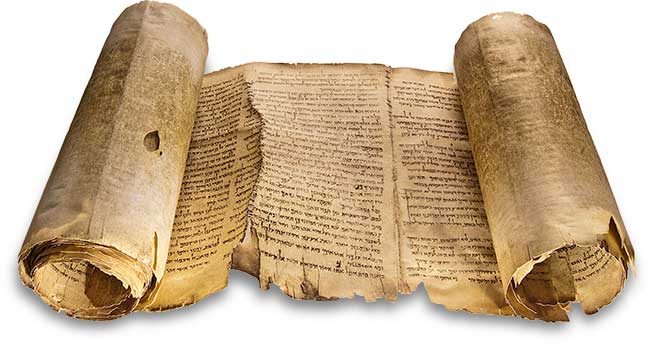
INSTRUCTIONS (contained in the seed) = THE LAW (2 Table of Stone)

Our lungs are representative of the 2 tables of stone
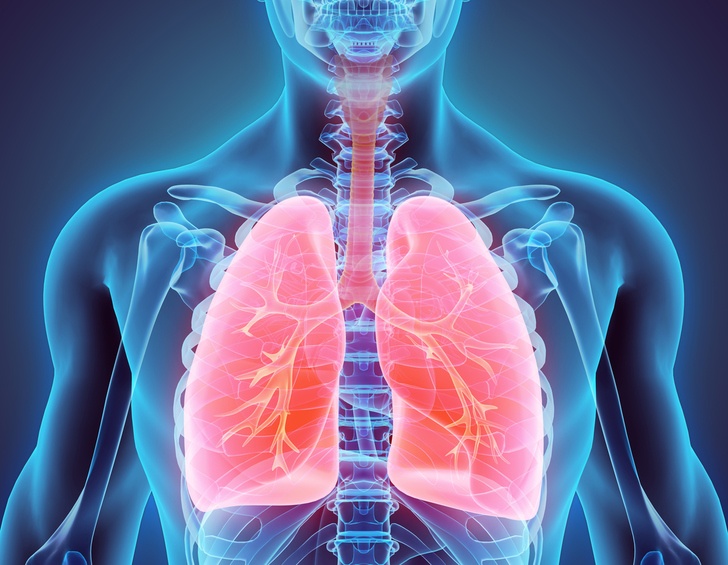
Genesis 2:7 And the LORD God formed man of the dust of the ground,
and breathed into his nostrils the breath of life; and man became a living soul.
Red Blood Cells transports oxygen to the lungs
White Blood Cells are involved in protecting the body against both infectious disease and foreign invaders
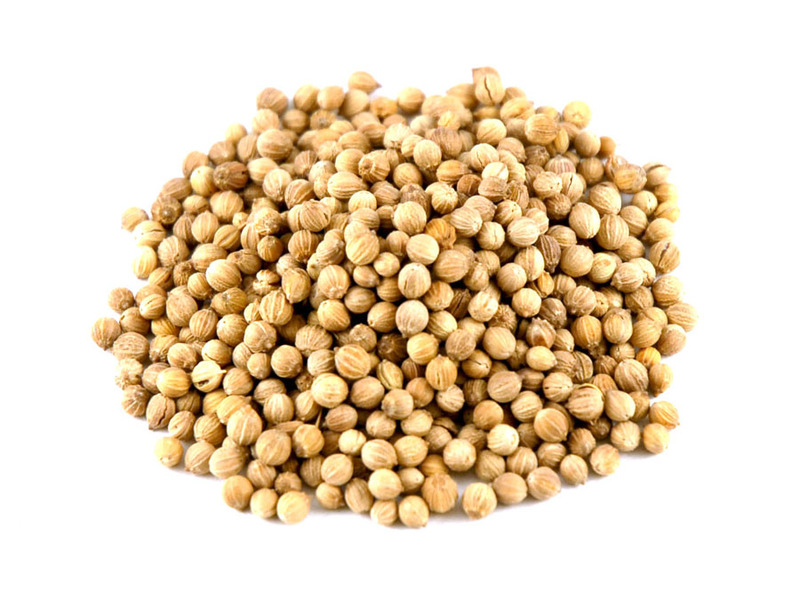
Manna (Coriander Seed)
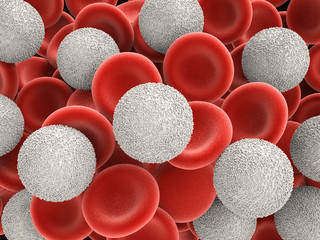
They contain DNA (a molecule that carries the genetic instructions used in the growth, development, functioning and reproduction of all known living organisms and many viruses) DNA stores biological information.
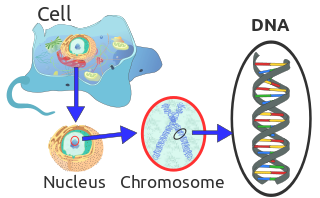
In humans, the heart is located between the lungs, in the middle compartment of the chest.[3]
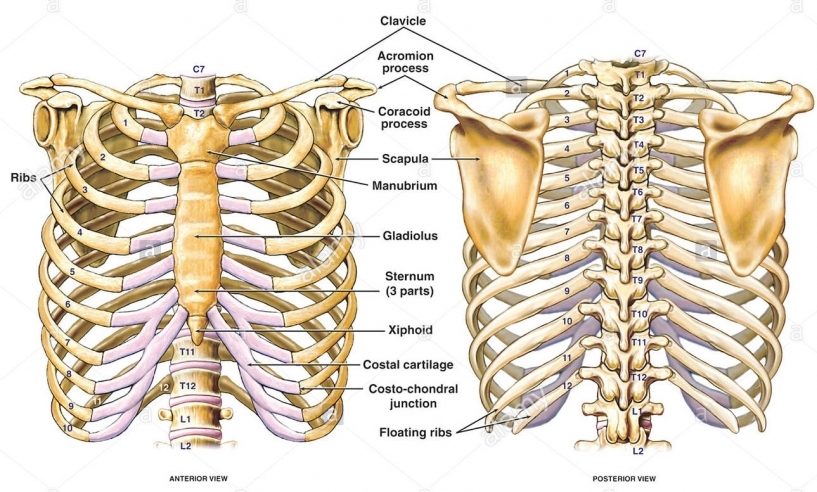
THE ARK OF THE 1st COVENANT with Israel (a shadow of good things to come)
Hebrews 9 : The Earthly Tabernacle (Exodus 25:1-9; Exodus 40:1-33)
1Now the first covenant had regulations for worship and an earthly sanctuary. 2A tabernacle was constructed. In its first room were the lampstand, the table, and the consecrated bread. This was called the Holy Place. 3Behind the second curtain was a room called the Most Holy Place, 4containing the golden altar of incense and the gold-covered ark of the covenant. Inside the ark were the gold jar of manna, Aaron’s staff that had budded, and the stone tablets of the covenant. 5Above the ark were the cherubim of glory, overshadowing the mercy seat. But we cannot discuss these things in detail now.
The Tabernacle Court :: The Cell
The Tabernacle :: The Nucleus
First Room of Tabernacle :: The Chromosome
Second Room, Holy of Holies :: The DNA
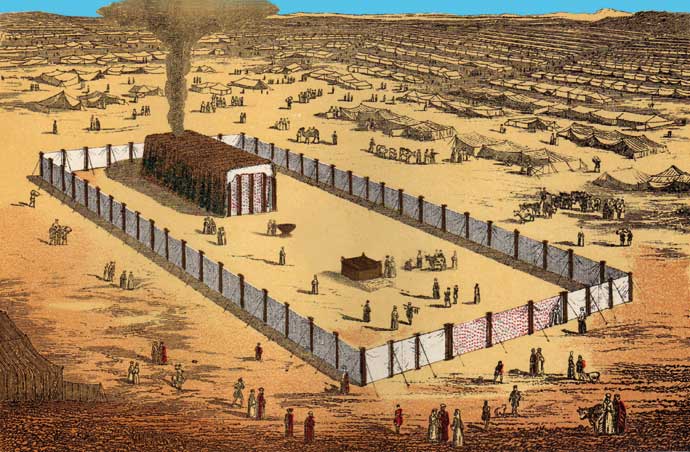

6Now when these things were thus ordained, the priests went always into the first tabernacle, accomplishing the service of God. 7But into the second went the high priest alone once every year, not without blood, which he offered for himself, and for the errors of the people: 8The Holy Ghost this signifying, that the way into the holiest of all was not yet made manifest, while as the first tabernacle was yet standing: 9Which was a figure for the time then present, in which were offered both gifts and sacrifices, that could not make him that did the service perfect, as pertaining to the conscience; 10Which stood only in meats and drinks, and divers washings, and carnal ordinances, imposed on them until the time of reformation.
Redemption through His Blood
11But Christ being come an high priest of good things to come, by a greater and more perfect tabernacle, not made with hands, that is to say, not of this building; 12Neither by the blood of goats and calves, but by his own blood he entered in once into the holy place, having obtained eternal redemption for us. 13For if the blood of bulls and of goats, and the ashes of an heifer sprinkling the unclean, sanctifies to the purifying of the flesh: 14How much more shall the blood of Christ, who through the eternal Spirit offered himself without spot to God, purge your conscience from dead works to serve the living God?
15And for this cause he is the mediator of the new testament, that by means of death, for the redemption of the transgressions that were under the first testament, they which are called might receive the promise of eternal inheritance. 16For where a testament is, there must also of necessity be the death of the testator. 17For a testament is of force after men are dead: otherwise it is of no strength at all while the testator lives. 18Whereupon neither the first testament was dedicated without blood. 19For when Moses had spoken every precept to all the people according to the law, he took the blood of calves and of goats, with water, and scarlet wool, and hyssop, and sprinkled both the book, and all the people, 20Saying, This is the blood of the testament which God has enjoined to you. 21Moreover he sprinkled with blood both the tabernacle, and all the vessels of the ministry. 22And almost all things are by the law purged with blood; and without shedding of blood is no remission.
23It was therefore necessary that the patterns of things in the heavens should be purified with these; but the heavenly things themselves with better sacrifices than these. 24For Christ is not entered into the holy places made with hands, which are the figures of the true; but into heaven itself, now to appear in the presence of God for us: 25Nor yet that he should offer himself often, as the high priest enters into the holy place every year with blood of others; 26For then must he often have suffered since the foundation of the world: but now once in the end of the world has he appeared to put away sin by the sacrifice of himself.27And as it is appointed to men once to die, but after this the judgment: 28So Christ was once offered to bear the sins of many; and to them that look for him shall he appear the second time without sin to salvation.
Representative of DNA (the Book of Life) contained in the White Blood Cells
A sacred wooden chest covered in gold, which was identified with God and represented Him.

Representative of the Chest

Always heavily veiled, only priests alone could look upon the Ark’s uncovered surface.
From the mercy seat of the Ark, where God spoke to Moses, eternity and heaven merged at one point on Earth in time and space.
Exodus 25 : MERCY SEAT
17 And thou shalt make a mercy seat of pure gold: two cubits and a half shall be the length thereof, and a cubit and a half the breadth thereof. 18 And thou shalt make two cherubims of gold, of beaten work shalt thou make them, in the two ends of the mercy seat. 19 And make one cherub on the one end, and the other cherub on the other end: even of the mercy seat shall ye make the cherubims on the two ends thereof. 20 And the cherubims shall stretch forth their wings on high, covering the mercy seat with their wings, and their faces shall look one to another; toward the mercy seat shall the faces of the cherubims be. 21 And thou shalt put the mercy seat above upon the ark; and in the ark thou shalt put the testimony that I shall give thee. 22 And there I will meet with thee, and I will commune with thee from above the mercy seat, from between the two cherubims which are upon the ark of the testimony, of all things which I will give thee in commandment unto the children of Israel.
The ARK Contained
1. Law of God :: derives its name which were 2 tablets of stone on which were inscribed the 10 commandments written by the finger of God

Representative of the Lungs

COPY OF LAWSwritten by Moses

2. GOLDEN POT OF MANNA (Coriander Seed)


Representative of White Blood Cells

4. ROD OF AARON (the High PriesT)that miraculously budded and grew ripe almonds over the course of one night
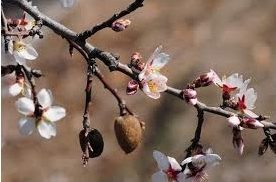
Numbers 17 :
10And the LORD said to Moses, Bring Aaron’s rod again before the testimony, to be kept for a token against the rebels; and you shall quite take away their murmurings from me, that they die not. 11And Moses did so: as the LORD commanded him, so did he.
Jesus (the New High Priest) was conceived in Mary (“Rebellion”)
